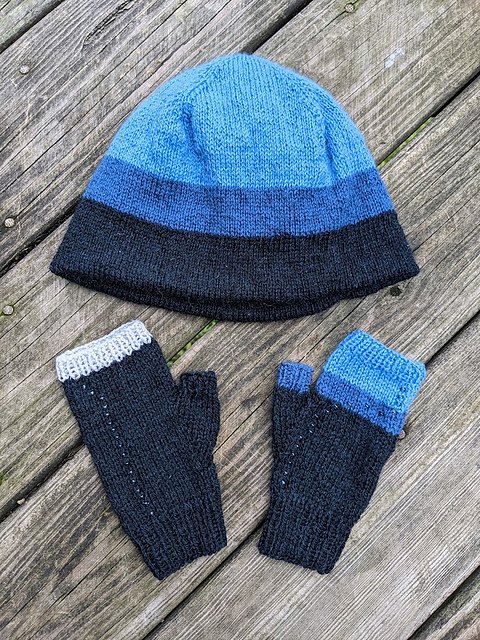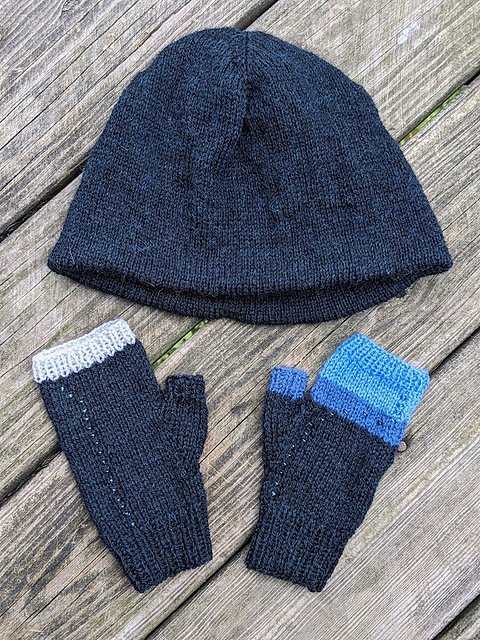Stratification Hat and Mitts
These fingerless litts and reversible hat demonstrate contrasting thermal stratification patterns in the summer and winter seasons in Adirondack lakes. Lakes in the Adirondacks and similar northern climatic regions develop pronounced stratification during the summer months. As the sun heats surface waters more rapidly than deeper zones, thermal resistance to mixing increases and the top and bottom layers of the lake become isolated. In late summer and fall, declining air temperatures and a lower sun angle reduce heat input to the lake, thermal resistance breaks down, and eventually the entire volume of water in the lake mixes. Often referred to as turnover, this mixing occurs around October in most Adirondack lakes. The mitts illustrate thermal stratification on the right hand and show the layers in different colors, with beads that represent the temperature depth profile of the lake. The left-hand mitt shows the weaker stratification in the wintertime. The hat shows the same thing; it is reversible and can be worn on its thermally stratified summer side or flipped and worn on its winter side. Lake temperature profile data illustrated by beads on the mitts came from AWI’s Upper Saranac Lake Monitoring Platform.
More details available here on Ravelry.



